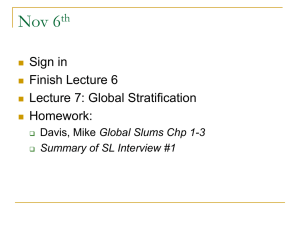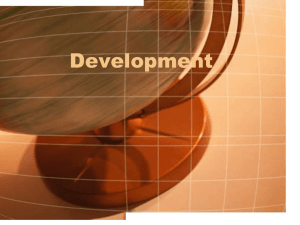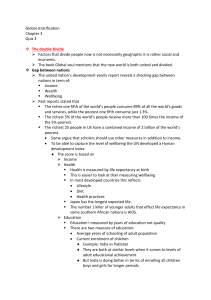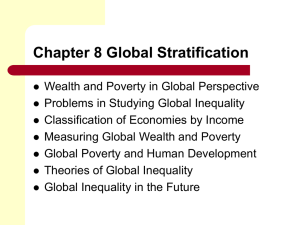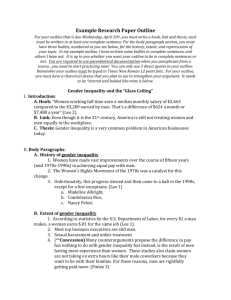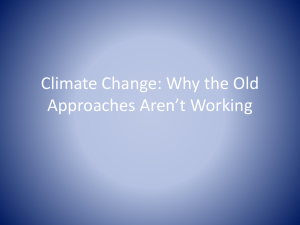Global Inequality
advertisement
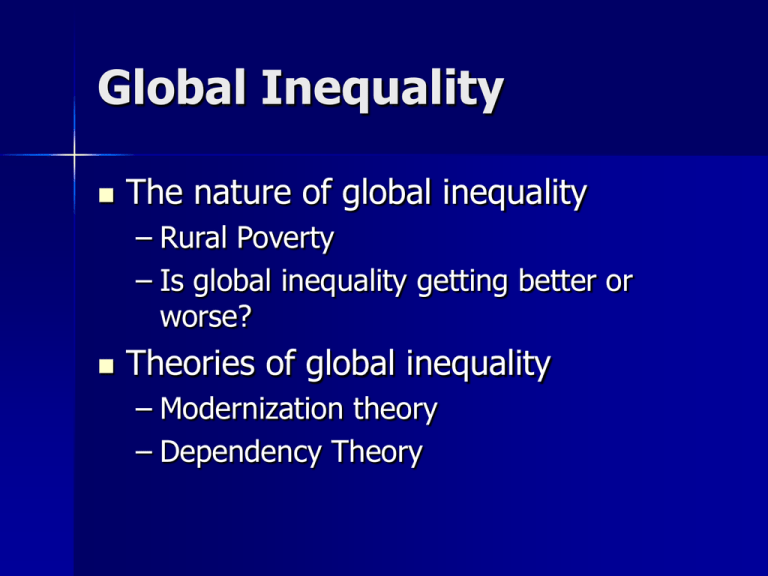
Global Inequality The nature of global inequality – Rural Poverty – Is global inequality getting better or worse? Theories of global inequality – Modernization theory – Dependency Theory The nature of global inequality In the world today, the richest 25% of the population receives 75% of the world income. The richest people of the world live in North America, Europe, and Australia. The poorest people of the world live in Africa, India and Southeast Asia. People in poor countries have little in the way of possessions Diets are often poor and lack meat , fruit and vegetables Medical care is limited As a result, life expectancy is short In poor countries, the poorest people live in rural areas. Growing populations and traditional farming techniques overstress the land, leading to erosion and deforestation and poor yields. Government policies tend to favor city people – E.g. caps on prices of grain help city people, but hurt rural farmers Is global inequality getting better or worse? Depends on how you measure it By country, it is getting worse For individuals, it is getting better Why is this? Because the most populous poor countries, China and India, have rising Gross Domestic Products (GDPs). Theories of Global Inequality Modernization theory (Rostow 1960) Suggested that all countries would inevitably go through the four stages of development 1. 2. 3. 4. The The The The traditional society preconditions for takeoff drive to maturity age of high mass consumption Modernization theory has been criticized for being over optimistic 50 years after it was created, many countries in the world are not developed. Dependency theory Dependency theory suggests that the reason why poor countries do not develop is because they are forcibly dependent on rich countries. Poor countries sell raw materials that are used for the industries of the rich countries. Means that most of the profits of manufacturing stay in rich world. No capital to develop industries in poor countries. Problems – some countries initially dependent on selling raw materials have managed to build industry – e.g. Canada, Australia, U.S. Places like China and India have been able to develop. China and India have been able to turn their one resource – people – into an asset (cheap labor)
